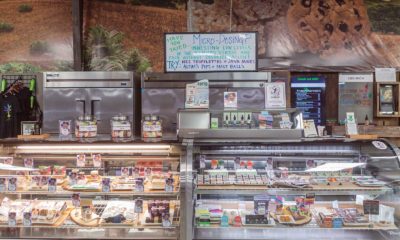Let’s just get this part out of the way first, because there definitely seems to be some confusion: The new 10 mg dose/serving cap on cannabis-infused edibles in California applies to all edibles in California — both medical and recreational.
When the California Department of Public Health released its proposed medical cannabis manufacturing regulations in 2017, many of the public comments decried the 10mg serving cap. But as the agency stated in its response, there’s nothing they can do about that specific part.
From the comment summary and response by the CDPH:
“A substantial number of comments expressed significant concern and disagreement with CDPH’s proposal to limit the amount of THC in a medicinal edible product to 10 mg per serving and 100 mg per package. Most expressed that, while 10 mg may be the right policy for the adult use market, which is more likely to have novice cannabis users, it is insufficient for the needs of the medicinal use… SB 94 imposed a restriction that all edible cannabis products be sold with a serving size of no more than 10 mg THC. CDPH has no authority to allow greater THC concentrations per serving in edible products, either for the medicinal or adult use market.”
The statement acknowledged that SB 94 does not impose a cap on total potency, but that admission was couched in language that emphasized the agency’s concerns about accidental overdose and — of course — the children.
Translation: Don’t expect those 100 mg package caps to rise any time soon.
California’s groundbreaking Proposition 215 created a medical cannabis landscape where edible products were dosed according to patient needs. Unfortunately, barring substantial changes to the regulations, those days are over.
The potency caps mean many cannabis consumers will no longer be able to buy products they’ve grown accustomed to using, and the change is even more pronounced for edible manufacturers like Brandon Mondo, founder and head chef at Wonko Edibles.
Wonko is an adult use licensed company that used to specialize in ultra-high dose edibles like “medicated candied bacon” and other cannabis confections charged with heavily concentrated cannabinoid-infused butter. The total potency of an entire package or item was regularly upwards of 1,000 mg of THC — much stronger than the average edible at the time and unspeakably strong compared to the current adult use limit.
That high amount of THC was by design, because when Mondo first started making edibles it was precisely because he needed massive doses of cannabinoids.
“I sustained an injury that left me in completely debilitating, immobilizing pain,” he said. “There’s only so much cannabis you can smoke in a day, so eventually I had to start eating it. I quickly learned that in order to get the intense relief cannabis provides me, I needed to make something with thousands of milligrams in strength and that eventually led to the butter I use now.”
He says it’s frustrating to no longer be able to offer what he knows is a powerfully effective medicine.
“Regulations have to happen, and I’m on board for the new system, but being forced to cap the potency has been painful for me, because I know many of the people I care about most won’t be able to treat themselves with the products I sell anymore.”
Of course, there’s no law against eating multiple 100 mg candy bars, but notwithstanding how unhealthy that would be, there also aren’t many cannabis patients who can afford to medicate that way: Legalization has created new taxes and fees at every level of the supply chain for all cannabis, and the break that medical patients get on the excise tax isn’t enough to make up for the additional expense facing patients with high-dose needs.
Unfortunately, where cannabis potency used to be set by patient need, it’s now set by (and for) people who mostly don’t even use cannabis. Think people like Maureen Dowd, who infamously ignored the clear advice given to her and ate an entire 16-dose chocolate bar, then freaked out in her hotel room and wrote an article fanning the flames of prohibitionist hysteria and calling for potency caps. Never mind that this is the equivalent of visiting a liquor distillery, gulping down a fifth and writing an article demanding smaller bottle sizes because you spent the night in your hotel room vomiting — her voice is the voice of the current edible regulations. It’s a hysterical voice that insists cannabis “overdose” can have lasting physiological harm.
The fact of the matter is cannabis has zero recorded instances of a lethal overdose attributed to it throughout millennia of human use. There are certainly real issues around cannabis edible dosing and efficacy, but the stigma being projected onto edibles in general, through alarmist news stories and overzealous regulation, capitalizes on the general public’s lack on knowledge.
Rather than succumb to reefer madness, California’s regulators should support the needs of medical cannabis patients. That means removing these onerous caps on edible potency — at least for medical users.
TELL US, do you rely on any high-dose cannabis edibles?
























